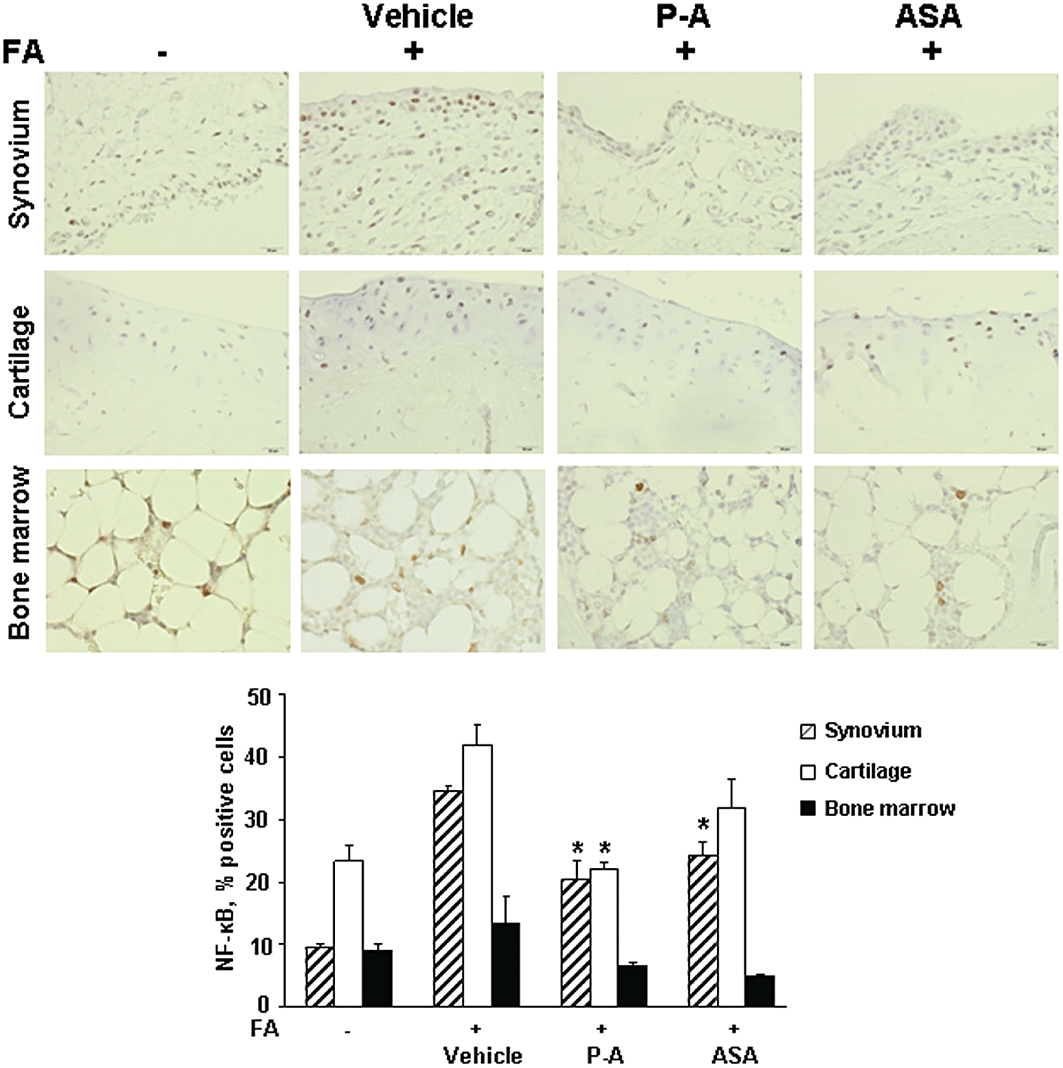Figure 5.

Effect of phospho-aspirin and aspirin on activated nuclear factor-κB (NF-κB). Immunohistochemical staining for activated NF-κB (p65 subunit) in synovium, cartilage and bone marrow from hind paw joint tissue samples from normal controls, and rats with Freund's adjuvant (FA)-induced arthritis treated with vehicle, phospho-aspirin (P-A; 110 mg·kg−1·day−1) or aspirin (ASA; 35 mg·kg−1·day−1). Tissue sections were examined using an Olympus BX41 microscope (40×) and photographed with an Olympus DP25 digital camera. NF-κB positive cells stain brown; specificity of binding was verified by using an isotypic control antibody. Upper panel: The synovium in the control consists of a monolayer of cells, which became multilayered in response to FA; phospho-aspirin reduced it significantly as did aspirin, but to a lesser degree. In cartilage, FA increased the number of NF-κB positive cells compared with control; phospho-aspirin reduced markedly NF-κB activation and aspirin had a similar but less pronounced effect. The bone marrow samples show essentially similar levels of NF-κB positivity. Lower panel: Five different fields per slide were scored as in the Methods and results for NF-κB staining in synovium, cartilage and bone marrow are shown as mean ± SEM; *significantly different compared with FA/vehicle-treated group; P < 0.05).
